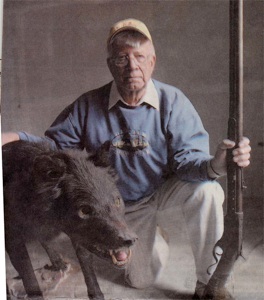Shakespeare once wrote, “A rose by any other name would smell as sweet.” But does a cryptid by any other name seem as scary?
Whether it’s known as Ringdocus, Shunka Warak’in, or the Madison Monster, this wolf-like creature has a history in the Eastern Montana area that dates back 139 years.
It all starts back in Ennis. Montana. According to the Almost Canon Podcast Facebook page: “In the 1880s, pioneers settling in the Madison River Valley also began encountering this strange, wolf-like beast. It had a long, thin snout, dark, shaggy fur, and a sloping back, a lot like a hyena.
The Hutchins family took part in the 1880s migration to the West; the word is their ranch still appears on Montana road maps today.
The youngest member of the Hutchins family, Ross Hutchins, would go on to become a naturalist with a PhD in zoology and would publish a book titled ‘Trails to Nature’s Mysteries: The Life of a Working Naturalist’ in 1977. In that book, he wrote: “One winter morning, my grandfather, Isreal Ammon (I.A.) Hutchins, was aroused by the barking of the dogs. He discovered that a wolf-like beast of dark color was chasing my grandmother’s geese. He fired his gun at the animal but missed. It ran off down the river, but several mornings later, it was seen again at about dawn. It was seen several more times at the home ranch as well as other ranches 10 or 15 miles down the valley. Whatever it was, it was a great traveler…
“Those who got a good look at the beast described it as being nearly black and having high shoulders and a back that sloped downward like a hyena. Then, one morning in late January, my grandfather was alerted by the dogs, and this time, he was able to kill it. Just what the animal was is still an open question. After being killed, it was donated to a man named Sherwood, who kept a combination grocery and museum at Henry Lake in Idaho. (Which is only about sixty miles south of Ennis, Montana.) It was mounted and displayed there for many years. He called it “Ringdocus.”
But, as Galadriel in “The Lord of the Rings” reminds us, “And some things that should not have been forgotten were lost. History became legend. Legend became myth.”
The fabled creature became part of family history and local folklore—that is, until Jack Kirby, the grandson of I.A. Hutchins, decided to track it down.
In a November 2007 article in the Bozeman Daily Chronicle, we learn about Kirby’s quest.
“ENNIS – More than a century ago, a wolf-like creature prowled the Madison Valley, killing livestock and letting out screams that one account said would leave a person’s hair standing on end.
A bullet from a Mormon settler’s rifle ended the animal’s life and triggered stories of the creature that were passed along through generations of family history and local folklore.
The only evidence of the creature’s existence was a missing taxidermy mount and a grainy black-and-white photograph of that mount – which fueled strange speculation about what kind of animal it really was.
Now, after 121 years, the taxidermy mount has been found. The creature that once spooked some of the Madison Valley’s first white settlers has come home.
“I never doubted the story,” said Jack Kirby, grandson of the settler who shot the animal.
After reading a Halloween-themed Chronicle story about local legends of strange creatures, Kirby tracked down the mount in the Idaho Museum of Natural History in Pocatello.
The mount is in amazingly good shape, showing no signs of wear and tear and retaining the color of the fur. It arrived in Ennis on Friday.”
The Idaho Museum of Natural History loaned the creature to Kirby to put on display at the Madison Valley History Museum.
So, how did it end up in Idaho?
Well, on his first try to kill the animal in 1886, Hutchins accidentally shot and killed one of his cows. Then, when he finally killed the creature, he traded the body with entrepreneur Joseph Sherwood for a new cow.
The Daily Chronicle reported, “Sherwood was a taxidermist. He mounted the animal and put it on display in his combination store-museum at Henry’s Lake in Idaho. His taxidermy collection was later given to the Idaho Museum of Natural History, where it was kept in storage.”
So far, no DNA test has been done on the creature to determine its identity. Jack Kirby is not sure he really wants to know and end the mystery that has been passed down for four generations.
Would you want to know?
Happy Friday!!!
Photo courtesy of the Madison Valley History Association, Ennis, Montana.
